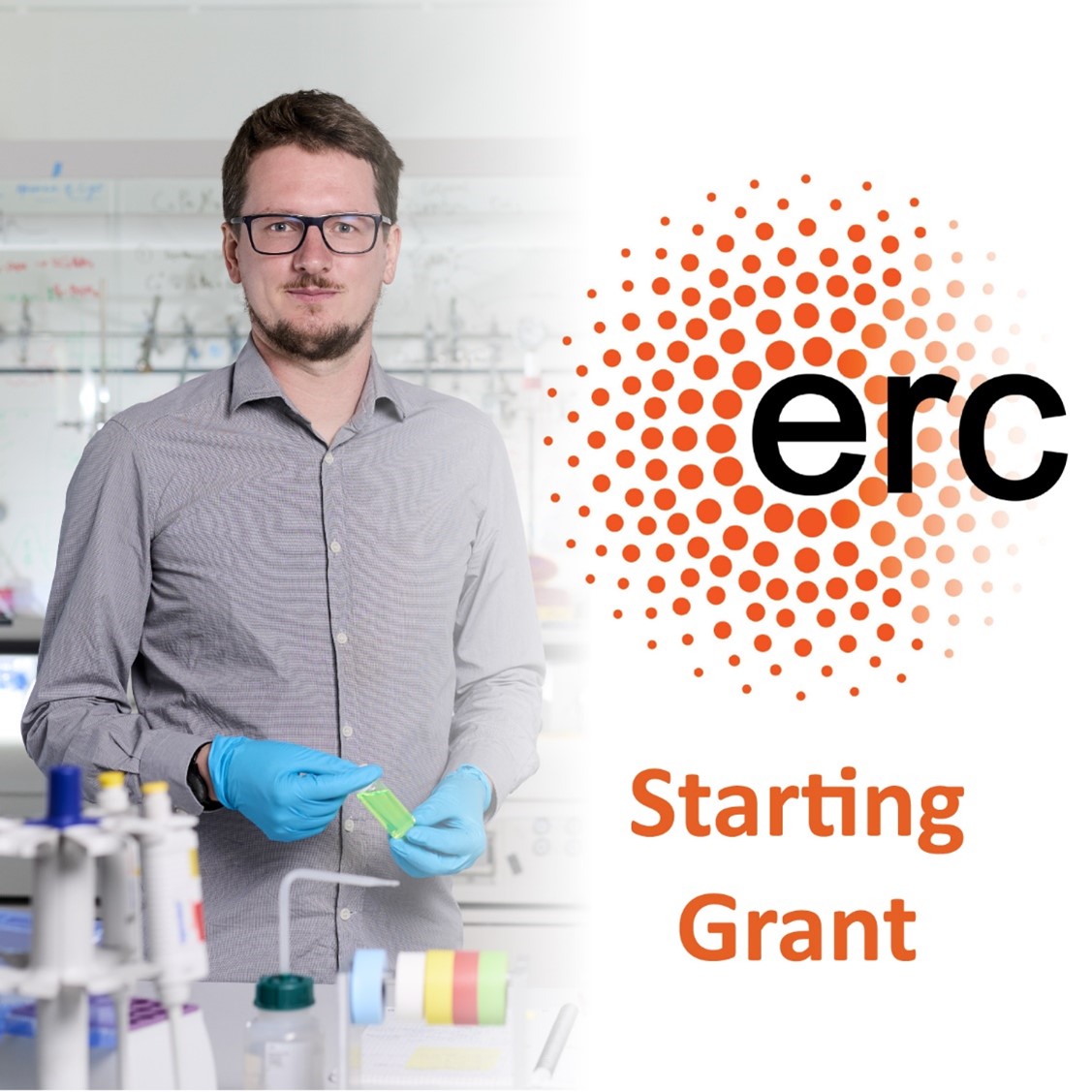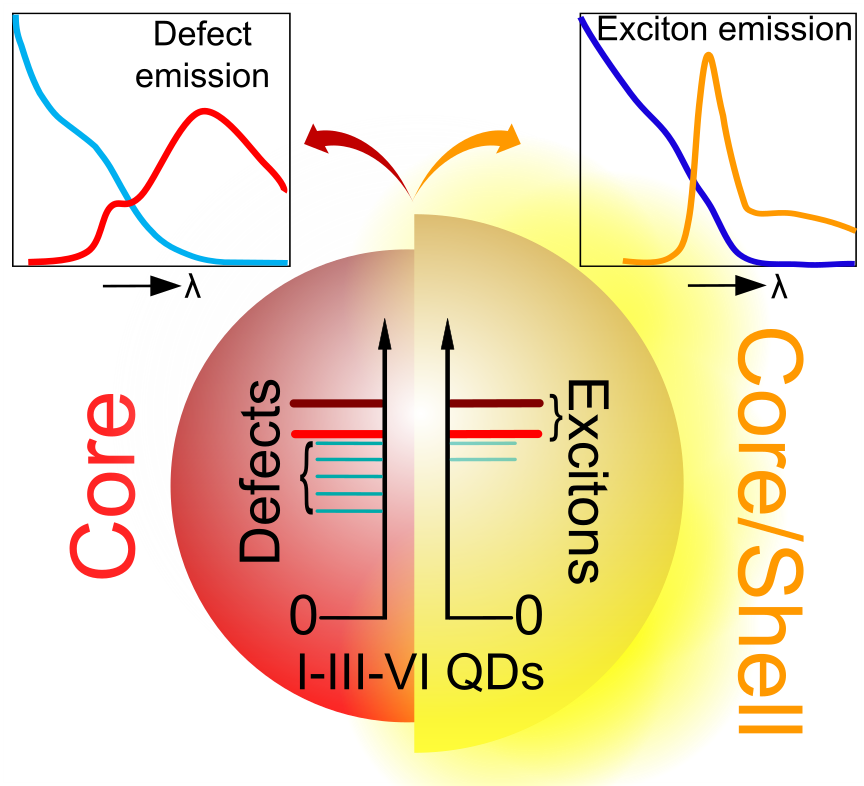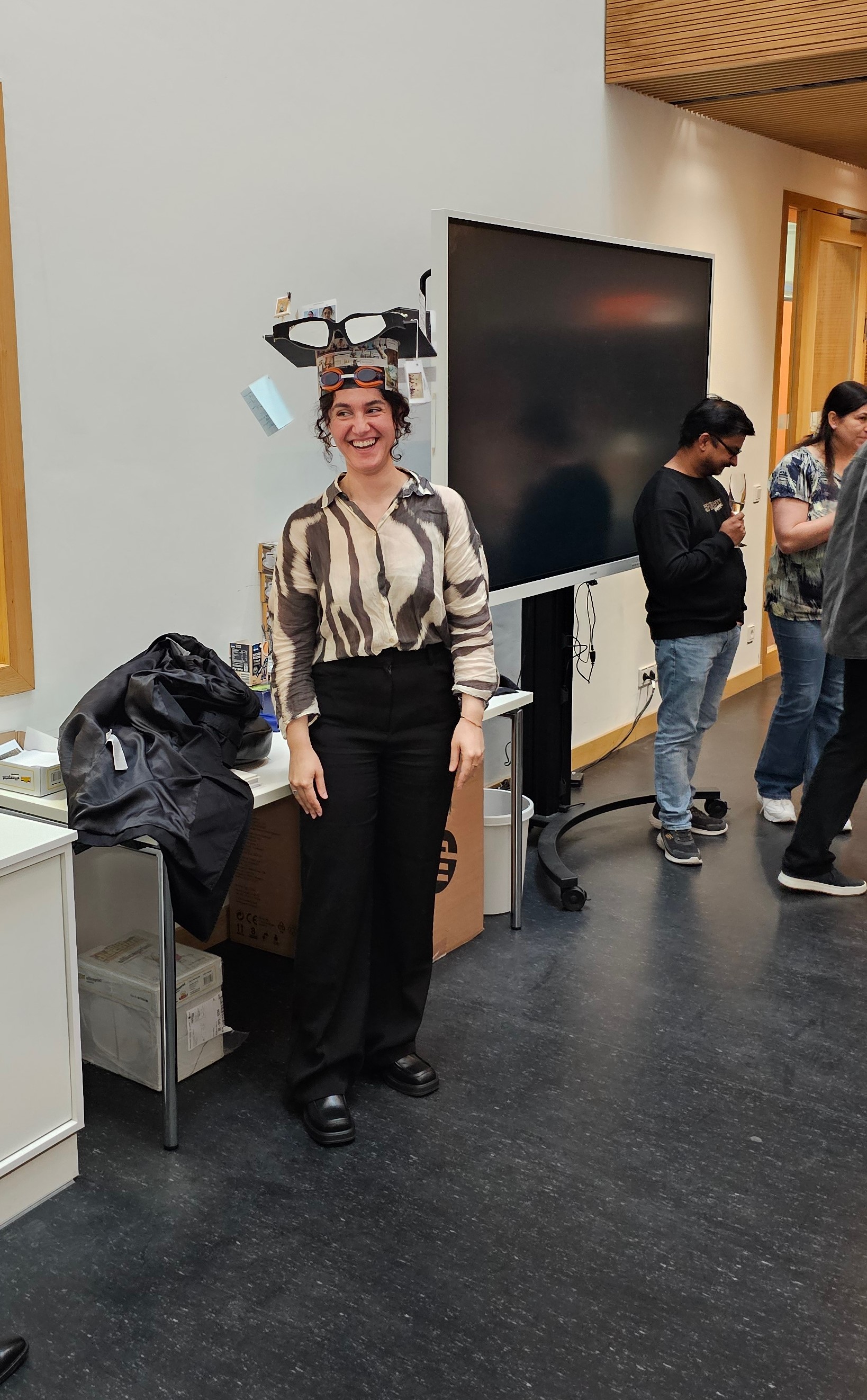Research and Mission
Our research focuses on understanding and applying the interaction of tailored nanosystems with light.
Novel materials designed at the nanoscale go hand in hand with innovative photonic and optoelectronic applications leading to important new devices such as efficient light emitters, solar energy converters, sensors as well as diagnostic and therapeutic tools. Nanomaterials are truly at the forefront of creating innovative solutions needed in 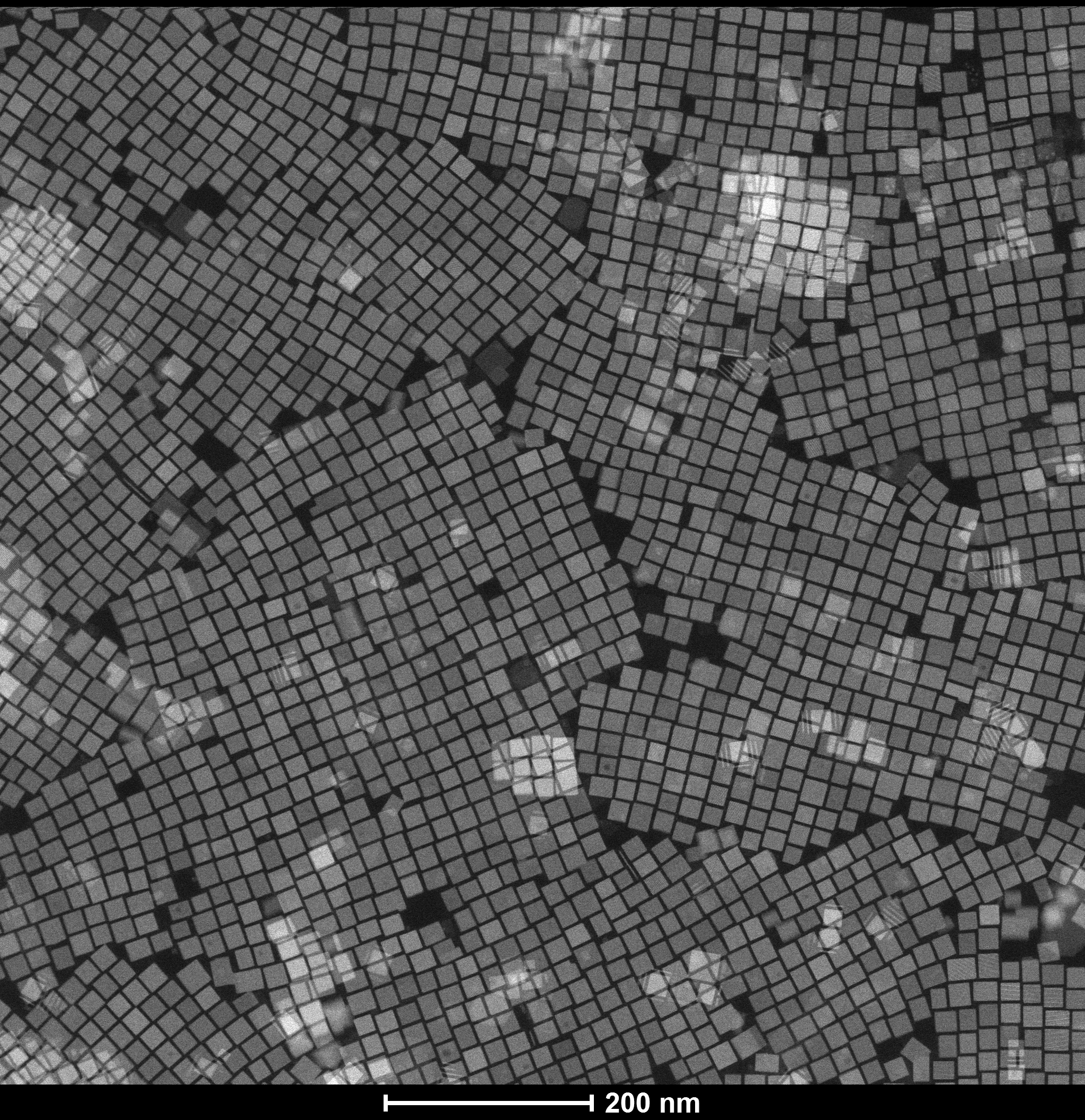 the fields of solar energy conversion, digitalization as well as health. In most cases such innovations are initiated by synthesizing a novel material system with unique physical properties. An in-depth understanding of the microscopic electronic processes underlying the observed properties is then needed in order to realize functional and competitive devices. Our mission is to synthesize novel solution-based semiconductor and metal nanocrystals, which are tailored to provide optimized functionalities specifically addressing the above mentioned application fields. Our major goal is to carry out advanced optical spectroscopy studies to gain a detailed understanding of optically induced charge carrier dynamics such as relaxation, recombination, charge separation, energy transfer and the initiation of photochemical reactions. Our research efforts focus on
the fields of solar energy conversion, digitalization as well as health. In most cases such innovations are initiated by synthesizing a novel material system with unique physical properties. An in-depth understanding of the microscopic electronic processes underlying the observed properties is then needed in order to realize functional and competitive devices. Our mission is to synthesize novel solution-based semiconductor and metal nanocrystals, which are tailored to provide optimized functionalities specifically addressing the above mentioned application fields. Our major goal is to carry out advanced optical spectroscopy studies to gain a detailed understanding of optically induced charge carrier dynamics such as relaxation, recombination, charge separation, energy transfer and the initiation of photochemical reactions. Our research efforts focus on
Dynamics of optically excited charge carriers in hybrid semiconductor nanocrystals
We investigate the nature and the dynamics of optical excitations in a range of colloidal nanosystems based on semiconducting materials such as chalcogenides, metal halide perovskites and π-conjugated organic materials. The combination with other novel material systems allow to further tailor the electronic potential landscape and finally the optical properties. Such hybrid nanostructures exhibit unique electronic and optical properties due to dimensionality, quantum size, Coulomb and spin effects. 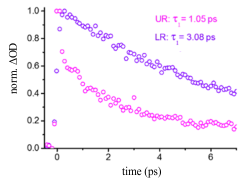 In our nanochemistry labs we work on the synthesis of novel nanocrystal systems and then characterize their structural properties mostly in collaboration with other groups, e.g. by electron microscopy and various diffraction techniques. The focus of our experimental work is devoted to advanced optical spectroscopy including time-resolved photoluminescence, transient absorption and femtosecond stimulated Raman experiments with time-resolutions between femtoseconds and microseconds. In order to gain the full picture, we additionally perform optical experiments on single nano-objects. Finally we apply our findings for developing new concepts for future photonic and optoelectronic devices (LEDs, lasers, photodetectors, solar cells, …).
In our nanochemistry labs we work on the synthesis of novel nanocrystal systems and then characterize their structural properties mostly in collaboration with other groups, e.g. by electron microscopy and various diffraction techniques. The focus of our experimental work is devoted to advanced optical spectroscopy including time-resolved photoluminescence, transient absorption and femtosecond stimulated Raman experiments with time-resolutions between femtoseconds and microseconds. In order to gain the full picture, we additionally perform optical experiments on single nano-objects. Finally we apply our findings for developing new concepts for future photonic and optoelectronic devices (LEDs, lasers, photodetectors, solar cells, …).
Solar water splitting and CO2-reduction with hybrid nanocrystals
We are synthesizing and investigating catalytically functionalized semiconductor nanocrystals to photocatalytically split water or reduce carbon dioxide to usable fuels such as hydrogen, methanol or methane. The major benefit 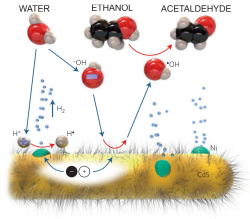 of such an approach is that the solar energy can be not only harvested but also stored in the form of chemical bonds of the fuels. At present, our main interest is in chalcogenide nanocrystals, carbon based nanosystems as well as metal halide perovskite nanomaterials. We examine the full process, starting from the synthesis of the structures through the optical and electronic characterization to the measurement of the efficiency of photocatalysis upon solar illumination. We strive to develop more efficient materials, but our focus is on understanding the microscopic processes. To this end, we employ several ultrafast optical spectroscopy techniques.
of such an approach is that the solar energy can be not only harvested but also stored in the form of chemical bonds of the fuels. At present, our main interest is in chalcogenide nanocrystals, carbon based nanosystems as well as metal halide perovskite nanomaterials. We examine the full process, starting from the synthesis of the structures through the optical and electronic characterization to the measurement of the efficiency of photocatalysis upon solar illumination. We strive to develop more efficient materials, but our focus is on understanding the microscopic processes. To this end, we employ several ultrafast optical spectroscopy techniques.
Nano- and Bio-plasmonics
The interaction of light with noble metal nanoparticles give rise to highly interesting effects such as the occurrence of strong plasmonic resonances due to collective oscillations of free electrons in such constrained geometries. These plasmonic resonances are due to collective electron oscillations with extremely high and locally confined amplitudes. Such “hot spots” can serve as local and super-strong sources for electromagnetic excitation. Placing molecules or semiconductor nanocrystals in such hot spots let them interact with light in a much stronger way and thus leads to drastically enhanced absorption, fluorescence, Raman and non-linear optical signals. This has naturally led to a series of chemical and biochemical sensing devices and novel diagnostic tools.
Plasmonic nanoparticles provide additional interesting properties after optical excitation such as drastic heating of both the electron sea (up to several 1000 °C) and of the lattice (up to several 100 °C). This optothermal heating initially confined to the size of the metallic nanoparticle gives rise to (i) hot electrons thermally ejected from the nanoparticle into the adjacent nano-surrounding, (ii) a local heat flow again restricted to the direct molecular neighborhood of the nanoparticle and (iiI) even optothermally initiated mechanical oscillations of the nanoparticle. All this can be used to manipulate the molecular or biomolecular surrounding thermally, mechanically or with those ejected hot electrons. A multitude of bioplasmonic applications open up in particular in the fields of biotechnology and nanotherapy. We are developing and investigating new conceptual ideas in this highly interdisciplinary field. This activity already led to the launch of a spin-off company GNA-Biosolutions.
initially confined to the size of the metallic nanoparticle gives rise to (i) hot electrons thermally ejected from the nanoparticle into the adjacent nano-surrounding, (ii) a local heat flow again restricted to the direct molecular neighborhood of the nanoparticle and (iiI) even optothermally initiated mechanical oscillations of the nanoparticle. All this can be used to manipulate the molecular or biomolecular surrounding thermally, mechanically or with those ejected hot electrons. A multitude of bioplasmonic applications open up in particular in the fields of biotechnology and nanotherapy. We are developing and investigating new conceptual ideas in this highly interdisciplinary field. This activity already led to the launch of a spin-off company GNA-Biosolutions.
We are finally combining the unique possibilities of nano-plasmonics as described above with the ease of exerting optical forces on colloidal noble metal nanoparticles. This gives us a versatile box of nano-tools to measure and manipulate biological objects such as biomolecules and cell membranes with nanometer precision.
Several local, national and international research and technology networks help to find competent partners from academia and industry. In this way we are able to conduct our research on the highest possible international level.


